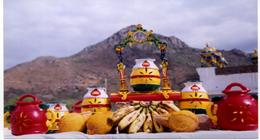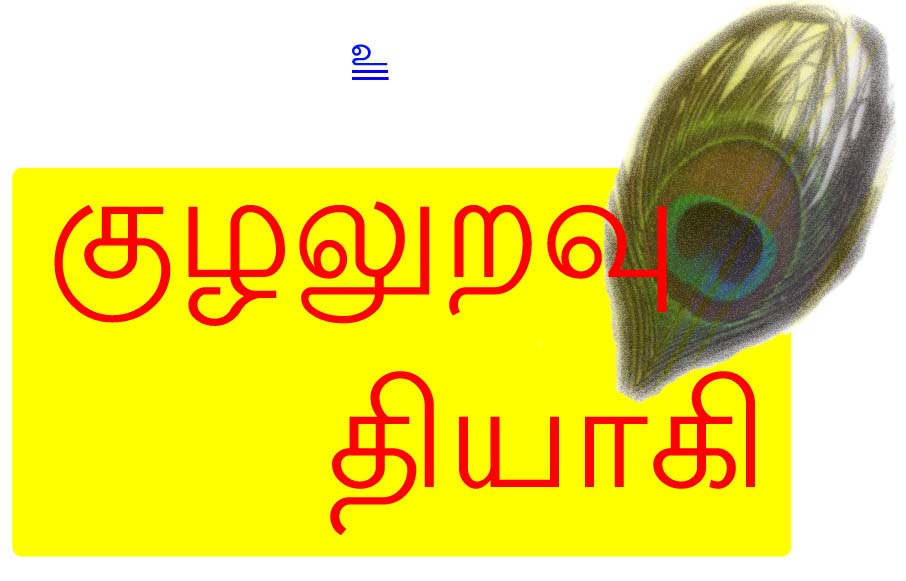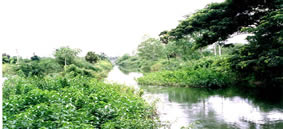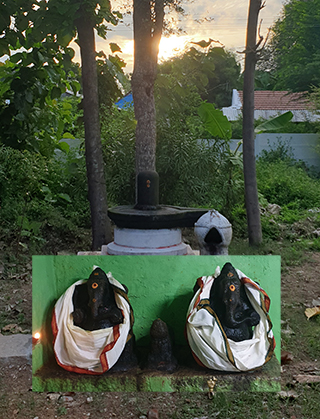


 |
 |
 |
Om Sri Vallabha Ganapathi Thunai
Om Sri Angala Parameswari Thunai
Om Sri Guruve Saranam
KUSA UMBRELLA FOR BUSINESS |
The application of kusa can be extended to any field or activity and business is no exception to it. All the features of kusa hold good for undertaking any business activity. However, there are certain applications which bear direct relationship with the business entrepreneurs. Apart from the cultural and hereditary inclination, the fourth house in a person's horoscope reveals the positive or other features for becoming a successful business man. Based on this, the Siddhas' concept of kusa is analysed.
INSIDE SQUARE AVUDAI |
It is one of the concepts of kusa that the centre is the direction for the manifestation of the kusa energy. It follows from this that the temples with the square avudai linga murthi are suitable for the worship of business men. These temples are completely charged with the kusa energy for millions of years and worshipping at these temples is a sure method of receiving the kusa energy required for a successful business adventure.
Out of so many methods of harnessing the kusa energy at these temples with square avudai linga murthi, the simple method is to light lamps with pure cow ghee at the four corners of the temple prakara facing the linga murthi. Now you are aware that eight is the kusa number for four. To get additional boons of the kusa, another four lamps can also be lit in the other four directions or two lamps at each of the four directions can also be placed so that eight ghee lamps bring you the kusa effect for business. Where there are two or more prakaras, eight gheet lamps in each prakara can also be lit to get manifold effects of kusa.
There are certain temples in our ancient India where the surrounding place of the main deity which is called the prakara manifest certain special effects of kusa. One such temple is Sri Swarnavareeswarar Siva temple, Melanettur, near Manamadurai, Tamil Nadu. Here the prakara manifests the kusa energy from time immemorial and the kusa energy manifest at this holy temple can be felt from millions and millions of stellar miles away in our universe. All business men who want to flourish in business should make it a point to worship with cow ghee lamps in this temple at least once a year especially when the moon is in the sthira rasis. For details of this great kusa temple, please refer our Ashram publication Sri Agasthia Vijayam (Apil 2007 and subsequent issues).
Eight is the kusa number for four. Temples which manifest divinity in eight forms can also be worshipped for successful business endeavours. For e.g. Engan, Ettukudi temples manifest the kusa energy specially suited for the business adventures. Another interesting concept is the multiplication of the energy available at the four directions by the benevolent tapas of the rishis in the holy places like Iyer Malai, Tiruchirappali and Thiru Annamalai. For e.g. when you light sixteen lamps cow ghee lamps in all directions in the east entrance of the teppakulam in Iyer Malai, (near Kulithalai, Tamil Nadu), the energy is multiplied millions of times because of the tapas of the rishis residing at Iyer Malai and the most positive energy devised by the Siddhas is released highly enriched and purified. Worship at Iyer Malai and experience the thrill of kusa energy! For more details refer our Ashram publication, Iyer Malai Mahimai.
SYMBOLS DO SPEAK |
There is a holy symbol called swastik which is worshipped for economic prosperity. There are two kinds of swastik based on the energy manifestation. The swastik which manifests the slow but positive energy is worshipped for harnessing the kusa energy for business development.

Sirumayankudi
How does the swastik symbol help you in developing a prosperous business activity?
The swastik symbol represents the four cardinal directions suitable
for a business enterprise. The energy collected at the four arm-ends
is concentrated on the kusa direction of centre.
The clockwise inclination of the swastik arms represents
one of the basic concepts of kusa.
The eight arms comprising the symbol automatically represent the kusa
number four.
There are special energy centres for this swastik symbol like Thiruvellarai, near Tiruchirappalli
and Sirumayangudi, near Lalgudi, Tiruchirappalli. Worshipping Sri Ganesa Murthis at these kusa
energy centres and distribution of almond cakes and sweets to poor children and devotees will bring
positive results quickly. Almond (badam) is called the kusa fruit. Sweets and drinks made out
of almond bring you the kusa energy when distributed to the poor and needy devotees at these
energy centres.
THE ALMIGHTY HIMSELF EXHIBITING KUSA ! |
It is a great wonder that many of the concepts of kusa are congregated at the great Siva temple at Thiruvanaikovil, Tiruchirappalli. This should be the most-sought-after kusa centre for prospective and existing business men. There are millions of wonders surrounding the suyambu linga murthi, Sri Jambukeswar and Sri Akilandeswari including the tadanga dedicated by Sri Adisankara, the rare tapas of the elephant and the spider, the celebrated jambu tree, etc. But our discussions here revolve around the two prakaras that exhibit the kusa energy.
The outer prakara of Sri Jambukeswara Swamy at Thiruvanaikovil temple has eight holy flag staff (kodi maram or dhwaja sthambam). Worshipping these dhwaja sthambam will grant you great boons of kusa.
The outermost prakara which is called Vibhuthi prakara or Thiruneetru prakara was constructed by Lord Siva Himself. The labourers who participated in the construction of this great prakara were given salary for the day in the form of vibhuti by Lord Siva and thus the prakara acquired the name Vibhuthi Prakara. Just witnessing this great prakara is a great boon for any business man. The dimensions of this prakara exhibit the relationship with the Siddhas' concept of kusa. The length of the vibhuthi prakara is 8000 feet. The height of the walls is 32 feet (4 times 8). How thoughtful of those ancient rishis who dedicated this golden prakara for the kusa energy!
The dhwaja sthamba prakaras and the vibhuti prakaras are called as the kusa prakaras. Circumambulating these prakaras on the chathurthi days (both shukla and krishna paksham) and lighting pure cow ghee lamps at minimum 32 places in these prakaras and distributing almond cakes to the poor children and devotees will grant you abundant kusa energy required for any business endeavour. Rush to Thiruvanaikovil and make hay while the Kusa shines!!
HARNESS KUSA IN THE LAPS OF GREAT FAKIRS ! |
The jeeva samadhi, athishtanam and brindavans of the rishis, siddhas, fakirs, etc. are other sources of kusa energy. There is one method of namaskara called ashta namaskara to harness the kusa energy manifest at these holy places. These holy places of pilgrimage are spread throughout the length and breadth of the sacred land of India. Dedicate your worship at any of these holdy shrines and reap the kusa energy.
Here are some of the holy athishtanams for your ready reference.
| Name of Siddhar/Rishi/Fakir | Place |
| Poda Siddhar | Kancheepuram |
| Kulandayananda Swamigal | Madurai |
| Paramacharyar | Kancheepuram |
| Sai Baba | Shirdi |
| Bade Sahib | Chinnababu Samudram, Pondicherry |
| Hazrath Mohamed Ali Shah | Allahabad Railway Junction |
| Aurobindo, Mother Aurobindo | Pondicherry |
| Mounaguru Swamigal | Kasavanampatti, Dindigul |
| Subbiah Swamigal | Dindigul |
| Ram Pardesi | Villanur near Pondicherry |
| Ramanar, Seshadri, Visiri Swamigal & | |
| millions of Siddhas | Thiru Annamalai | �
The method of performing the ashta namaskaram at these holy power centres is very simple. The namaskarams are performed in two phases. First, perform four namaskaram at the four sides of the athishtanam starting from the entrance side of the shrine. The second phase of four namaskaram starts (clockwise) from the first corner left to the entrance and ends with the corner at the right side of the entrance. The four namaskars at the sides added with the four namaskars at the corners are the ashta namaskars to be performed at any holy athishtanam, jeevalaya or brindavan to reap the benefits of kusa energy. Please note the ashta namaskara is different from the ashtanga namaskara. Ashta namaskara consists of eight namaskaras performed at eight directions of an athistanam. Ashtanga namaskaram is a single namaskaram performed anywhere with the eight parts of our body touching the floor. Ashta namaskara perfomed in the above manner coupled with chappathi and curd rice distribution to the poor devotees will ensure sound business development.